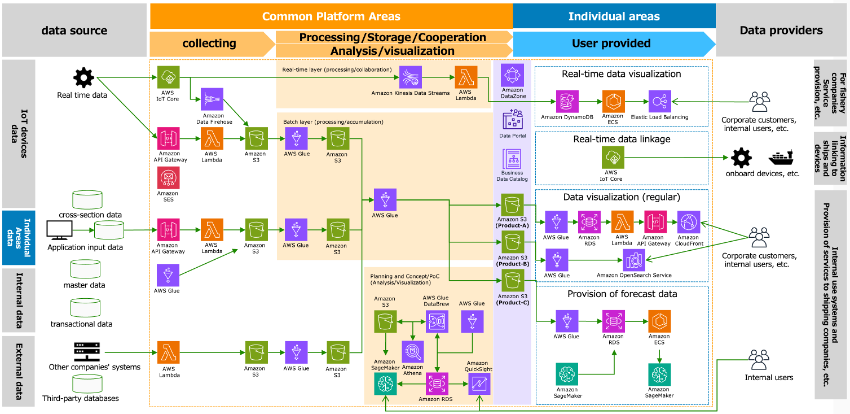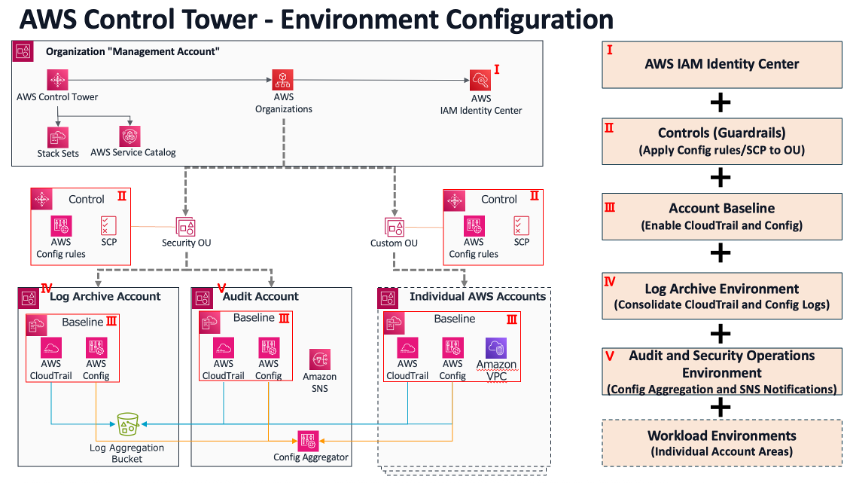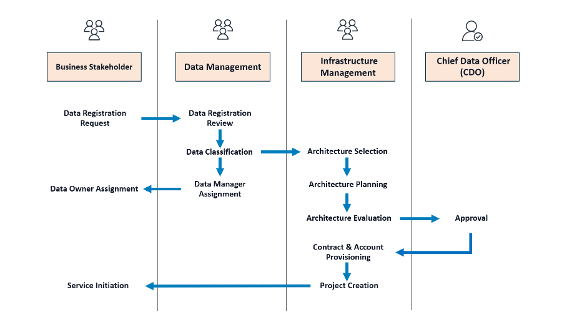AWS Big Data Blog
Realizing ocean data democratization: Furuno Electric’s initiatives using Amazon DataZone
This is a guest post authored by Akira Mikami, a technical expert at Furuno Electric. The content and opinions in this post are those of the third-party author and AWS is not responsible for the content or accuracy of this post.
Since successfully commercializing the world’s first fish finder in 1948, Furuno Electric has been developing unique ultrasonic and electronic technologies in the marine electronics field. Under the company motto of “making the invisible visible”, they’ve have expanded their business centered on marine sensing technology and are now extending into subscription-based data businesses using Internet of Things (IoT) data. They’re are actively promoting the planning and development of data businesses to realize their new management vision outlined in FURUNO GLOBAL VISION NAVI NEXT 2030.
Like many manufacturing companies, Furuno Electric faced significant changes in revenue structure and technical architecture as they transitioned from traditional business to data-driven business. To succeed in this transformation, it was essential to build a foundation that promotes data utilization across the entire organization.
This post demonstrates how Furuno Electric built their system using Amazon DataZone and other Amazon Web Services (AWS) services to address technical infrastructure fragmentation, establish proper security governance, and develop an effective data business promotion system as part of their journey transitioning from a traditional manufacturing company to a data-driven business.
Challenges
Furuno Electric faced three specific challenges in promoting their data business: technical infrastructure fragmentation and duplication, lack of security governance, and underdeveloped data business promotion system.
Project managers in the data business were independently designing and building data infrastructure, resulting in duplication of components for data collection, processing, and storage. This situation created wasteful development investments, hindered effective use of common data, and caused inefficient states that took time to launch businesses. Marine data services including fishing vessel data collection and sharing system, FWC, and Furuno Open Platform (FOP) had similar functions implemented separately for each project along the functional axes of data collection, processing, visualization, and analysis, resulting in unnecessary workload across the organization.
Security measures were considered and implemented separately by each department, and although checklists existed, they weren’t applied uniformly. This resulted in a lack of consistency in security measures, duplicate consideration costs for each department, and uncertainty in the comprehensiveness of measures. Integrated risk management was also difficult.
The organizational structure wasn’t prepared for the iterative development processes and long-term revenue models specific to data businesses, and there was a lack of mechanisms for cross-departmental data utilization and joint development. The distributed operational structure across departments made it difficult to rapidly deploy and continuously improve data businesses. In the process of creating data businesses, it became necessary to build entirely different customer relationships compared to traditional product sales businesses. In terms of organizational management and talent strategy, there was a need to transition from a top-down, risk-averse, specialized skill-focused structure to a bottom-up, challenge-oriented structure that emphasizes communication skills and diversity.
Solution overview
Furuno Electric built a data management foundation centered on Amazon DataZone, Amazon Simple Storage Service (Amazon S3), AWS Glue, and AWS Control Tower, a comprehensive solution designed to address each of the three challenges mentioned in the preceding section.
Building the integrated data platform JuBuRaw
To address technical infrastructure fragmentation and duplication, they built Junction Architecture of Business Raw Data (JuBuRaw), a platform that consolidates common components for data collection, storage, management, and authentication. Using AWS Cloud Development Kit (AWS CDK) to code the infrastructure, they achieved standardization and automation of environment construction. This provides consistency and reproducibility, making it easier to add new systems and migrate existing systems to the common platform. Merely by executing CDK, a standard data pipeline (using AWS IoT Core, Amazon S3, AWS Glue, Amazon Kinesis, Amazon API Gateway, and AWS Lambda) for a specific system is automatically built. This eliminates duplicate design and development within the organization, reducing business launch time and improving fixed cost management. By standardizing common functions, they reduced the management and operation costs of existing systems and enabled the launch of new systems in half the time compared to before.
The following diagram is the overall JuBuRaw architecture.

Security control with AWS Control Tower
To address the lack of security governance, they implemented a comprehensive security framework centered on AWS Control Tower to apply consistent security policies across multiple accounts. With automated monitoring systems using AWS Security Hub, AWS Config, and AWS CloudTrail and an integrated authentication system using AWS IAM Identity Center, they provide security consistency while reducing operational costs and management burden.
With the organization’s management account at the top, they placed AWS Control Tower, AWS Organizations, and AWS IAM Identity Center to achieve hierarchical security management. By adopting a multi-layered defense structure consisting of account baselines with AWS CloudTrail and AWS Config enabled, log archive environments, and audit and security operation environments, consistent security policies are applied to all accounts, enabling early detection and response to security incidents. This integrated approach has reduced the workload for security responses. This configuration is shown in the following diagram.

Establishing a data democratization foundation with Amazon DataZone
To address the underdeveloped data business promotion system, they introduced Amazon DataZone to streamline data discovery, sharing, and governance across the organization. They clarified the role division between the infrastructure management team and the data management team, centralizing data security policies, quality management, and metadata standardization. With a project-based collaboration environment, they promoted cross-departmental data utilization, establishing a foundation to support the creation and continuous monetization of data businesses.
Organizational reform and operational structure establishment
In parallel with the introduction of technical solutions, they implemented organizational reforms to support medium- to long-term data utilization. The new organizational structure consists of three main roles: the infrastructure management team, the data management team, and the chief data officer. The following chart shows this organizational structure.

The infrastructure management team is responsible for maintaining and developing the technical foundation of the platform, managing multiple accounts using AWS Control Tower, applying and monitoring security baselines, and tracking infrastructure version management and changing history. By specializing in common technologies, they can provide a stable platform.
The data management team is responsible for data quality management and continual improvement using AWS Glue Data Quality, standardization and maintenance of metadata, definition and application of data security policies, management of Amazon DataZone data Catalog, and providing data governance using Amazon DataZone. To maximize the value of data, they focus on deeply understanding business requirements and data characteristics and performing appropriate data management.
The chief data officer is responsible for formulating data business strategies and determining direction, promoting coordination and collaboration between teams, making decisions regarding the evolution of the data management foundation, and fostering a data utilization culture throughout the organization. From a strategic perspective, they oversee the whole and bridge business goals and technology.
This clear division of roles has established an operational structure for effective data utilization, accelerating the data business creation process. Additionally, clarifying data ownership has improved data quality and reliability, promoting data utilization across the organization. This structure is sustainable and can flexibly respond to technological changes and changes in the business environment.
Benefits of the modernized platform
As a concrete application example of the integrated data platform JuBuRaw and organizational structure explained in the previous section, we introduce the migration project of the existing service SHIPS. This use case is a comprehensive migration case that uses all three solution elements of data collection, management, and utilization mentioned earlier.
Furuno Electric provides a system called SHIPS that plots ship position information and monitors the status of equipment installed on ships. By migrating this existing service to the JuBuRaw foundation, the several functional enhancements are expected.
In terms of data integration enhancement, by using the data catalog function of Amazon DataZone, it becomes easier to integrate not only ship position information but also various data sources such as internal systems, IoT devices, other company systems, automatic identification system (AIS) data, and weather and sea condition data. This enables swift data analysis and comprehensive ship management, which means operators can detect potential issues and implement preventive measures before they develop into serious problems. Particularly important is that by storing this data in a common data lake and retaining them as master data, they create an environment where the data can be easily used by other applications.
For security enhancement, organizations can use Amazon DataZone federated governance with publish-subscribe (pubsub) workflow mechanism and fine-grained access control capabilities. This means they can implement detailed permissions management specifically for data assets, rows, and columns while maintaining unified access control and data governance across multiple AWS accounts and organizational boundaries.
In this case, by using the new integrated data management foundation, it becomes possible to integrate individually designed and built data foundations, improving both efficiency and functionality. A consistent data flow from data sources to the data platform and then to individual applications is realized, enabling flexible data utilization centered on the data lake. Linkage with each application can also be easily realized from the data lake, providing expandability for future data utilization.
This SHIPS migration case is a comprehensive approach using the solution elements of the JuBuRaw foundation and is expected to serve as a reference model for future system migrations. It’s expected to achieve both service quality improvement and operational cost reduction.
Future vision and next steps
Based on the data management foundation they’ve built, Furuno Electric aims to further expand and deepen data utilization. As part of their plan to continue and expand digital transformation, they’re currently starting with the migration of SHIPS, but plan to gradually migrate other IoT-related services (such as FOP, FWC, and Ichidake) to the new data management foundation in the future. This is expected to further strengthen the foundation for company-wide data utilization and enhance synergies between services.
Continuous enhancement of secure data sharing and access control is also essential. With the increase in data and expansion of utilization scope, the importance of security and access control will further increase. They’ll optimize the balance between data protection and utilization while incorporating practices accumulated through operations.
Additionally, Furuno Electric is exploring the expansion of their data management capabilities to Amazon SageMaker, specifically using Amazon SageMaker Catalog integrated with Amazon DataZone. This integration will enable them to seamlessly extend their existing data analytics governance workflows into artificial intelligence and machine learning (AI/ML) workloads. By applying the same data discovery, data sharing, and access control foundation across both data analytics and AI model development, they can accelerate the development of new AI-powered services. The unified governance framework will also provide secure and efficient AI adoption throughout the organization.
Through these initiatives, Furuno Electric is realizing their company motto of “making the invisible visible” in the field of data business as well. The integrated data platform JuBuRaw isn’t just an integration of technical foundations but serves as a foundation to support organizational culture transformation and the creation of new business models. As seen in the SHIPS migration case, using this foundation not only enhances existing services but also expands possibilities for new data utilization.
Through building a data foundation that can flexibly respond to business growth and changes while using a cloud-based environment, Furuno Electric has successfully led their digital transformation. They’ll continue to provide new value to customers through the democratization of marine data and accelerate the transition to data-driven business.
This case serves as a reference for many manufacturing companies promoting data utilization, showing that approaches from both technical and organizational perspectives are key to success. As Furuno Electric’s initiatives demonstrate, data democratization and effective utilization play an important role in the digital transformation of manufacturing.
About the Authors
 Akira Mikami is a technical expert who played a central role in the FURUNO Data Platform (JuBuRaw) Construction Project at Furuno Electric Co., Ltd. Specializing in data platform construction and architecture, he led the implementation of cloud solutions utilizing AWS. He contributed to achieving efficient data management and strengthening team collaboration, leading the project to success.
Akira Mikami is a technical expert who played a central role in the FURUNO Data Platform (JuBuRaw) Construction Project at Furuno Electric Co., Ltd. Specializing in data platform construction and architecture, he led the implementation of cloud solutions utilizing AWS. He contributed to achieving efficient data management and strengthening team collaboration, leading the project to success.
 Junpei Ozono is a Sr. Go-to-market (GTM) Data & AI solutions architect at Amazon Web Services (AWS) in Japan. He drives technical market creation for data and AI solutions while collaborating with global teams to develop scalable GTM motions. He guides organizations in designing and implementing innovative data-driven architectures powered by AWS services, helping customers accelerate their cloud transformation journey through modern data and AI solutions. His expertise spans across modern data architectures including data mesh, data lakehouse, and generative AI, so customers can build scalable and innovative solutions on Amazon Web Services (AWS).
Junpei Ozono is a Sr. Go-to-market (GTM) Data & AI solutions architect at Amazon Web Services (AWS) in Japan. He drives technical market creation for data and AI solutions while collaborating with global teams to develop scalable GTM motions. He guides organizations in designing and implementing innovative data-driven architectures powered by AWS services, helping customers accelerate their cloud transformation journey through modern data and AI solutions. His expertise spans across modern data architectures including data mesh, data lakehouse, and generative AI, so customers can build scalable and innovative solutions on Amazon Web Services (AWS).
 Mitsuhiko Nishida is an Enterprise Solutions Architecture Automotive & Manufacturing Group Solutions Architect at Amazon Web Services (AWS) in Japan. He serves as a field Solutions Architect for manufacturing customers, helping them solve their business challenges. With expertise in generative AI and manufacturing IT, he guides the design and implementation of innovative solutions leveraging cutting-edge technologies. He supports manufacturing customers in building efficient architecture powered by AWS services to accelerate their cloud transformation journey and contribute to their digital transformation initiatives.
Mitsuhiko Nishida is an Enterprise Solutions Architecture Automotive & Manufacturing Group Solutions Architect at Amazon Web Services (AWS) in Japan. He serves as a field Solutions Architect for manufacturing customers, helping them solve their business challenges. With expertise in generative AI and manufacturing IT, he guides the design and implementation of innovative solutions leveraging cutting-edge technologies. He supports manufacturing customers in building efficient architecture powered by AWS services to accelerate their cloud transformation journey and contribute to their digital transformation initiatives.